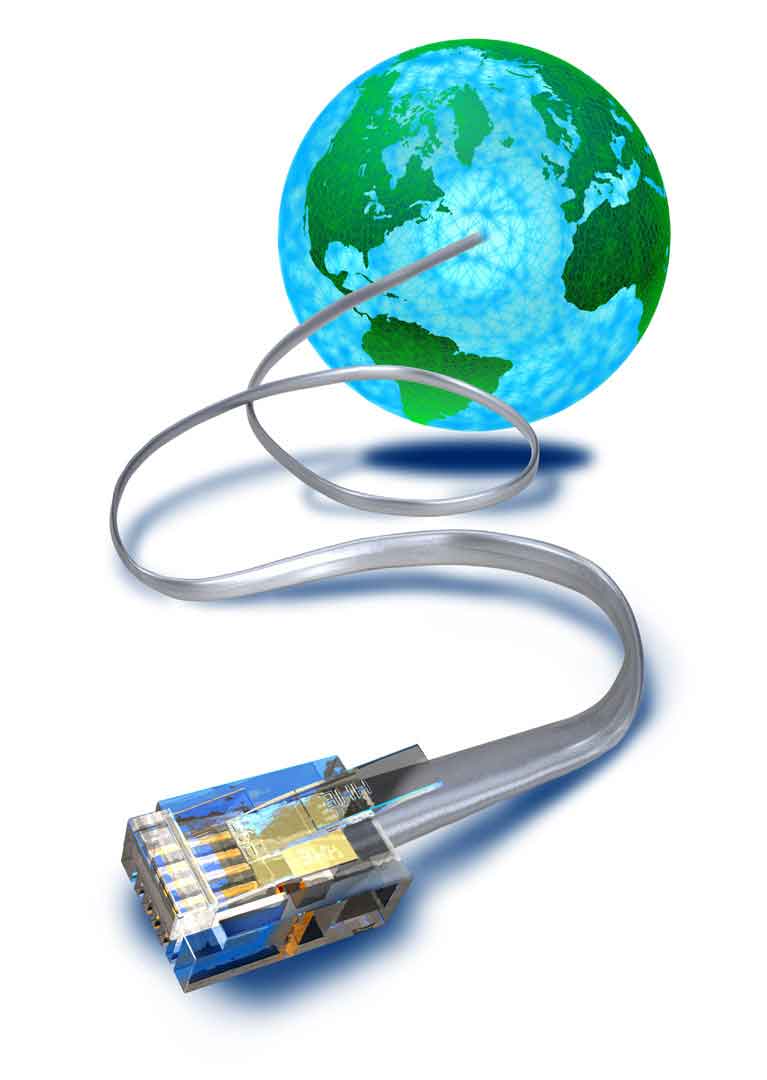|
|
In this edition of Views and News, ETI is pleased to provide our take on Net Neutrality, market structure, and the so-called "network management" issue. We also offer key insights on the quickly changing landscape of telecommunications taxation, and identify core areas that taxing authorities and telecom providers should examine in the midst of expected regulatory changes.
Read on below, or navigate over to
econtech.com
where you can read online, or download a
printer-friendly version.
|
|
Net Neutrality: A Market Structure Perspective
|
|
 What we now think of as the Internet began life in the late 1960s as a US Government research program (then known as ARPANET) aimed at facilitating communication among government and private research institutions and universities. The commercial Internet as we now know it has actually been around for less than two decades. Its mass market adoption became possible with the creation of the World Wide Web in 1991 and by the introduction of web browsers offering a graphical user interface (GUI). It was around that same time that preexisting online services like Prodigy, Compuserve and America Online began migrating their subscribers off of proprietary (non-Internet) GUI browsers and over to the Internet.
What we now think of as the Internet began life in the late 1960s as a US Government research program (then known as ARPANET) aimed at facilitating communication among government and private research institutions and universities. The commercial Internet as we now know it has actually been around for less than two decades. Its mass market adoption became possible with the creation of the World Wide Web in 1991 and by the introduction of web browsers offering a graphical user interface (GUI). It was around that same time that preexisting online services like Prodigy, Compuserve and America Online began migrating their subscribers off of proprietary (non-Internet) GUI browsers and over to the Internet.
The early commercial Internet was wildly competitive and facilitated competition in virtually every economic sector, by providing consumers with nationwide – even worldwide – access to suppliers of almost any imaginable product or service. User access to the Internet was achieved using conventional voice telephone lines provided by the local telephone company to place dial-up calls to so-called Internet Service Providers (ISPs). The ISP would in turn route its customers’ e-mail, web address requests, searches, and various other Internet communications to “peering points” where Internet traffic could be exchanged with other networks for routing to and from its origin and destination. And, while the local telephone company generally enjoyed near-monopoly control of this “last mile” telecom segment, customers could use their phone lines to access any ISP of their choice.
 At the outset, most local telcos were not even in the ISP business, and when some finally begin offering ISP services beginning in the late 1990s, they were compelled by long-standing FCC rules to afford their own affiliate no preference or advantage relative to other non-affiliated ISPs. By the end of the 1990s, numerous local and national ISPs had entered what had become an extremely competitive and unconcentrated market. When demand for dial-up Internet access had reached its peak, around the beginning of 2002, even the largest ISP at that time – America Online – served only about one in five Internet-connected households. And while the larger telcos – Verizon, SBC, BellSouth and Qwest – had each begun to offer dial-up ISP services of their own, their market presence was quite limited...
At the outset, most local telcos were not even in the ISP business, and when some finally begin offering ISP services beginning in the late 1990s, they were compelled by long-standing FCC rules to afford their own affiliate no preference or advantage relative to other non-affiliated ISPs. By the end of the 1990s, numerous local and national ISPs had entered what had become an extremely competitive and unconcentrated market. When demand for dial-up Internet access had reached its peak, around the beginning of 2002, even the largest ISP at that time – America Online – served only about one in five Internet-connected households. And while the larger telcos – Verizon, SBC, BellSouth and Qwest – had each begun to offer dial-up ISP services of their own, their market presence was quite limited...
Continue reading at econtech.com
|
|
Technology and Taxation: Keeping Up With the Tax Implications of the Fast-paced Changes in Telecommunications and the Internet
|
|
 For many years, federal, state and local governments have obtained significant revenues from taxes imposed on telecommunications services and telecommunications providers. Many telecom-related taxes are linked to specific technologies or regulatory definitions; sometimes they depend on the type of provider and/or pricing structure, rather than on the underlying functionalities that the services provide. As a result, small changes in any of these conditions can result in profound and often unanticipated tax and revenue increases or decreases. Because of the many subtle distinctions involved, attempts to adjust or reinterpret telecommunications taxes to mesh with current technologies and services can result in unintended consequences.
For many years, federal, state and local governments have obtained significant revenues from taxes imposed on telecommunications services and telecommunications providers. Many telecom-related taxes are linked to specific technologies or regulatory definitions; sometimes they depend on the type of provider and/or pricing structure, rather than on the underlying functionalities that the services provide. As a result, small changes in any of these conditions can result in profound and often unanticipated tax and revenue increases or decreases. Because of the many subtle distinctions involved, attempts to adjust or reinterpret telecommunications taxes to mesh with current technologies and services can result in unintended consequences.
A case in point is the federal telecommunications excise tax imposed on local service and toll telephone service (i.e., long distance). In order to distinguish taxable “toll calls” from non-taxable services (such as private lines), the federal tax code defined “toll calls” as those whose prices were based upon call duration and distance. But as very high capacity fiber optics and digital switches replaced legacy transmission and switching technology, distance all but dropped out as a cost driver and, by the end of the 1990s, most long distance calls were priced solely on the basis of call duration. Several taxpayers challenged the applicability of the excise tax to toll calls once the “distance” element dropped out and, following several years of litigation, the IRS ultimately conceded...
Continue reading at econtech.com
|
|
|
|
About ETI. Founded in 1972, Economics and Technology, Inc. is a leading research and consulting firm specializing in telecommunications regulation and policy, litigation support, taxation, service procurement, and negotiation. ETI serves a wide range of telecom industry stakeholders in the US and abroad, including telecommunications carriers, attorneys and their clients, consumer advocates, state and local governments, regulatory agencies, and large corporate, institutional and government purchasers of telecom services. |
|
|